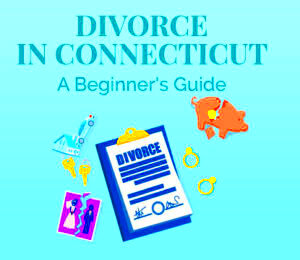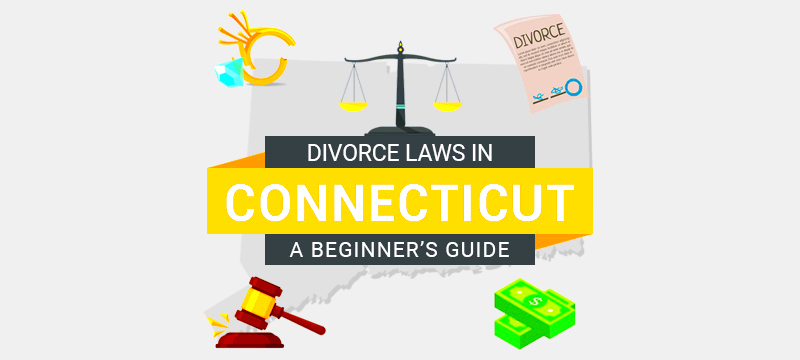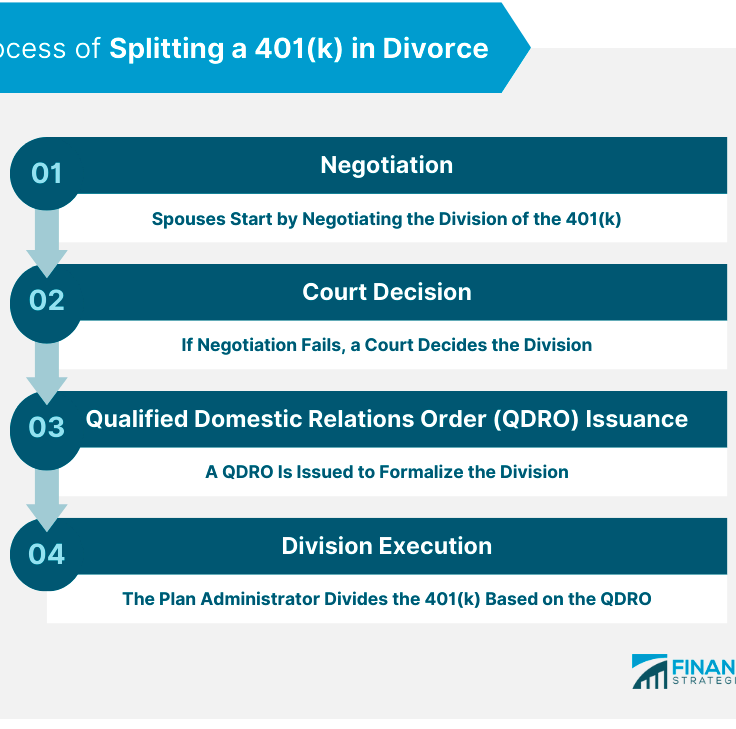Connecticut Divorce Laws and 401k Division Explained
Divorce can be a complicated process, especially when it comes to understanding the laws in your state. In Connecticut, divorce laws are designed to ensure fairness and equity for both parties. Whether you’re facing issues related to custody, property division, or financial support, knowing the legal framework can help you navigate your situation more effectively. This post will focus on how divorce affects 401k plans, a crucial aspect of financial planning in marriage.
Understanding 401k Plans in Divorce

A 401k plan is a retirement savings plan sponsored by an employer that allows employees to save a portion of their paycheck before taxes are taken out. This means that funds in a 401k grow tax-deferred until withdrawal. Here’s what you should know about 401k plans in the context of divorce:
- Ownership: 401k accounts are typically considered marital property if contributions were made during the marriage.
- Vesting: Employees must be fully vested to access their employer’s contributions to their 401k.
- Withdrawal Penalties: Early withdrawals from a 401k often incur penalties and taxes.
Understanding these factors is essential for fair division in divorce settlements. This will help both parties make informed decisions about their financial futures.
Connecticut Law on Division of 401k During Divorce

In Connecticut, the division of a 401k during a divorce follows the principle of equitable distribution. This means that marital assets, including retirement accounts, are divided fairly, but not necessarily equally. Here are some key points regarding Connecticut law:
- Marital vs. Separate Property: Only the portion of the 401k accrued during the marriage is subject to division. Any contributions made before marriage are typically considered separate property.
- Qualified Domestic Relations Order (QDRO): A QDRO is a legal order that allows for the division of retirement plans without incurring taxes or penalties. This order must be drafted and approved to access the funds.
- Negotiation and Settlement: Couples can negotiate how to divide the 401k, potentially agreeing to offset it with other assets.
Being aware of these laws can help you better understand your rights and options when it comes to retirement assets in a divorce.
How to Calculate the Value of 401k for Divorce

Calculating the value of a 401k for divorce can seem daunting, but breaking it down into manageable steps makes it easier. To get an accurate assessment, consider the following:
- Gather Documents: Collect all relevant documents, including 401k statements, tax returns, and any employment records showing contributions.
- Determine the Date of Marriage: Identify the date of marriage and the date of separation, as only the contributions made during this time are relevant for division.
- Calculate the Total Contributions: Look at the total contributions made during the marriage, including both employee and employer contributions.
- Account for Growth: Assess the growth of the 401k during the marriage. This includes any investment gains or losses.
- Seek Professional Help: Consider hiring a financial expert or attorney who specializes in divorce to help you accurately assess the value.
Using these steps can help ensure a fair division of assets. It’s crucial to be transparent and thorough during this process to avoid any potential disputes later on.
Process of Dividing 401k in Divorce Settlement
Dividing a 401k in a divorce settlement involves several key steps. Understanding this process can help ensure that both parties feel fairly treated:
- Negotiation: Couples often negotiate how to split the 401k during the divorce proceedings. This can be done through discussions or mediation.
- Drafting a QDRO: Once an agreement is reached, a Qualified Domestic Relations Order (QDRO) must be drafted. This legal document allows for the division of retirement plans.
- Approval of the QDRO: The QDRO must be approved by the court and then sent to the 401k plan administrator.
- Execution of the Order: After approval, the plan administrator will execute the division, transferring the agreed-upon amount to the non-owning spouse’s account.
This process ensures that both parties receive their fair share of the retirement assets, which is crucial for financial stability post-divorce.
Tax Implications of 401k Division in Divorce
Understanding the tax implications of dividing a 401k during divorce is vital to avoid unexpected financial consequences. Here are some key points to keep in mind:
- No Immediate Tax Liability: Generally, if a QDRO is in place, the receiving spouse does not face immediate tax penalties or liabilities when the 401k is divided.
- Future Withdrawals: Any withdrawals from the 401k will be subject to income tax, so it’s essential to plan accordingly for future tax implications.
- Early Withdrawal Penalties: If either spouse withdraws funds before the age of 59½, they may incur an additional 10% early withdrawal penalty unless specific exceptions apply.
- IRA Rollovers: The receiving spouse may choose to roll over the funds into an Individual Retirement Account (IRA), which can help avoid immediate tax consequences.
Being aware of these tax implications can help you make informed decisions during the divorce process, ensuring that you don’t face any financial surprises down the line.
Tips for Protecting Your Retirement Assets
Protecting your retirement assets during a divorce is crucial for ensuring your financial future remains secure. Here are some practical tips to help you safeguard your 401k and other retirement accounts:
- Understand Your Rights: Familiarize yourself with Connecticut’s divorce laws, especially regarding marital property and asset division. Knowledge is power.
- Keep Records: Maintain accurate records of all contributions to your retirement accounts. This includes statements, tax returns, and any relevant documentation.
- Consider Professional Help: Consult a financial advisor or divorce attorney who specializes in asset division. They can provide valuable insights and help you navigate complex situations.
- Stay Calm and Communicate: Open communication with your spouse can help reduce conflict. A collaborative approach to dividing assets can often lead to a more amicable resolution.
- Evaluate Other Assets: If you’re willing to give up a portion of your 401k, consider negotiating for other assets like the family home or investments to ensure overall fairness.
Taking these proactive steps can help you protect your retirement savings and set yourself up for a more secure future.
FAQs about Connecticut Divorce Laws and 401k Division
As you navigate the complexities of divorce and retirement asset division, you may have questions. Here are some frequently asked questions to provide clarity:
- Can I prevent my spouse from accessing my 401k?
- While you can’t completely prevent access, you can ensure that only the portion accrued during the marriage is divided.
- What happens if I withdraw money from my 401k during the divorce?
- Withdrawing funds can lead to penalties and taxes. It’s advisable to avoid withdrawals until the divorce is finalized.
- How is the value of my 401k determined?
- The value is based on the total contributions and growth during the marriage. Documentation is essential for an accurate assessment.
- What is a QDRO, and why do I need it?
- A Qualified Domestic Relations Order is necessary for dividing retirement accounts without incurring taxes or penalties.
These FAQs can help demystify some of the common concerns individuals have about divorce and 401k division.
Conclusion on Navigating Divorce and Retirement Assets
Navigating a divorce is never easy, especially when it involves dividing retirement assets like a 401k. Understanding the laws and processes in Connecticut can empower you to make informed decisions. Remember that protecting your financial future is crucial. Take proactive steps to gather information, seek professional advice, and maintain open communication with your spouse.
By being informed and prepared, you can better advocate for your rights and work towards a fair resolution that honors the contributions made during your marriage. The journey may be challenging, but with the right approach, you can emerge stronger and more secure in your financial future.


